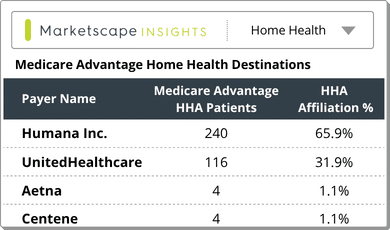Carter Bakkum, Senior Data Analyst, Healthcare Insights
Carter is a senior data analyst who works to turn complex, messy data into actionable intelligence. Carter studied economics and statistics at the University of Virginia before joining an economic consulting firm, where he supported expert testifying economic witnesses on behalf of fortune 500 healthcare companies. After the significant changes in the importance of data analytics during the pandemic, Carter joined the Trella team to dive deeper into the numbers to uncover the stories that drive our experience.Q3 2021 Medicare Claims Insights: PAC Stabilization and Potential Obstacles
By Carter Bakkum | March 1, 2022
Highlights:
- Year-over-year home health admissions from Q2 2020 to Q2 2021 increased 12.8%. However, this increase is likely driven by COVID-19 lockdown restrictions implemented in Q2 2020. Admissions between Q3 2020 and Q2 2021 remained relatively stable around 850K, roughly 50K lower than typical pre-pandemic levels in 2019.
- Hospice admissions increased by 0.8% year-over-year in Q3 2021 and remain consistently above pre-pandemic levels. An average length of stay of 83 days is the highest since Q4 2020.
- Skilled nursing admissions continue to fall well below pre-pandemic levels, likely driven by staffing challenges and COVID-19 restrictions. Despite this, ALOS remained remarkably consistent at 24 days.
PAC Admission Stabilization
After a chaotic 2020 amidst the beginning of the COVID-19 pandemic, the Post-Acute Care (PAC) industry appears to be stabilizing in terms of quarterly admissions. In our analysis of Q3 2021 Medicare claims data, we saw an overall increase in hospice admissions and stability in quarterly home health and skilled nursing admissions. While these trends may indicate a potential recovery from the impacts of COVID-19, the outlook isn’t entirely sunny. Many PAC agencies, particularly skilled nursing facilities, will continue to face a multitude of pressing issues.
Obstacle: Staffing and Retention
Problems hiring and retaining staff plague companies which have given rise to new competitive strategies, including acqui-hiring – obtaining new talent through the acquisition of existing companies. Problems hiring and retaining staff plague companies which have given rise to new competitive strategies, including acqui-hiring – obtaining new talent through the acquisition of existing companies. With many small PAC businesses struggling financially and inherent economies of scale with healthcare companies, the industry very well may see unprecedented consolidation in the coming years.
Soultion: these obstacles further emphasize the need for competitive positioning– both with referral partners and potential employees. Employee branding and retention strategies will need to evolve, much like referral marketing practices have in recent years. Use data to identify the areas in which your agency outperforms others in the market to demonstrate your unique value propositions to referral partners and potential employees. A strong competitive positioning statement not only shows your commitment to patient care but also your commitment to supporting your on-site staff.
Obstacle: PAC Perception
Without a doubt, PAC agencies fill a vital role in the continuum of care for Medicare beneficiaries. PAC utilization could greatly improve patients’ quality of life, discussed further in this blog post. Despite overwhelming evidence of positive impacts, some referring physicians are still unaware of the role PAC could play in improving their patients’ lives.
Solution: educating referral partners and hospitals to the beneficial impacts PAC has on patient outcomes and Medicare spend should remain a focus for post-acute leaders throughout 2022. Provide referral partners with concrete evidence of the benefits by showing hospitalization rates and total patient costs for those referred to PAC versus those not.
Trella Health is the leader in market intelligence for the 65+ population, with extensive data sets including Medicare FFS, Medicare Advantage, commercial payers, ACOs, and DCEs. For more insights into how to stand out as a preferred referral partner, schedule a demo today.













